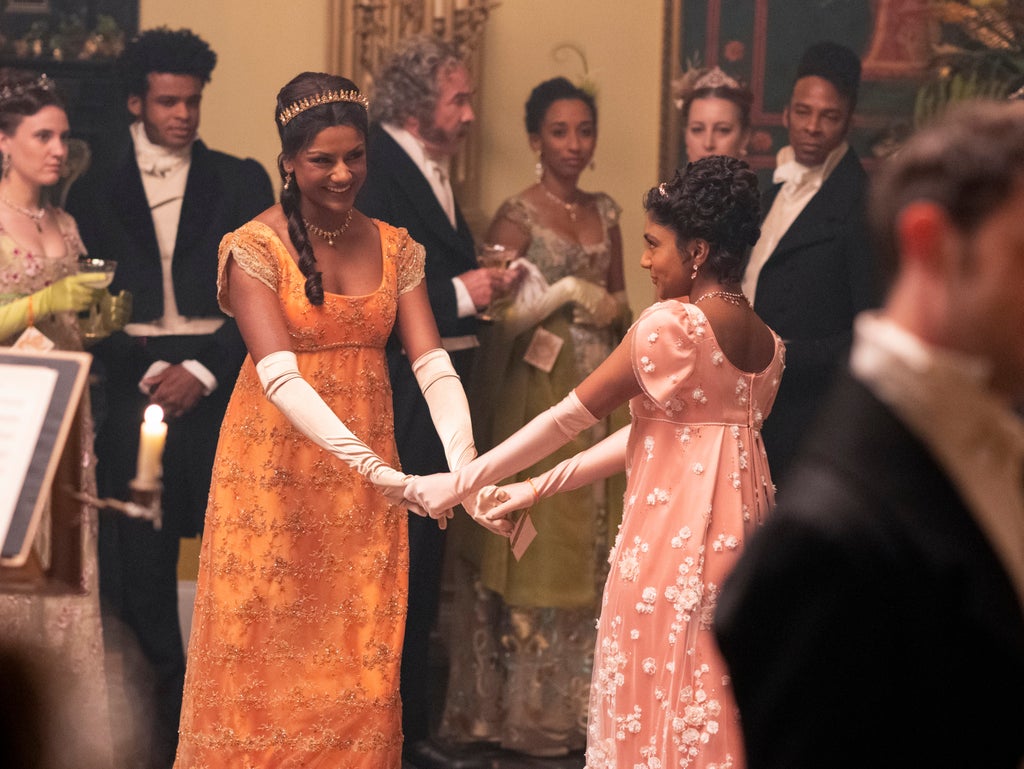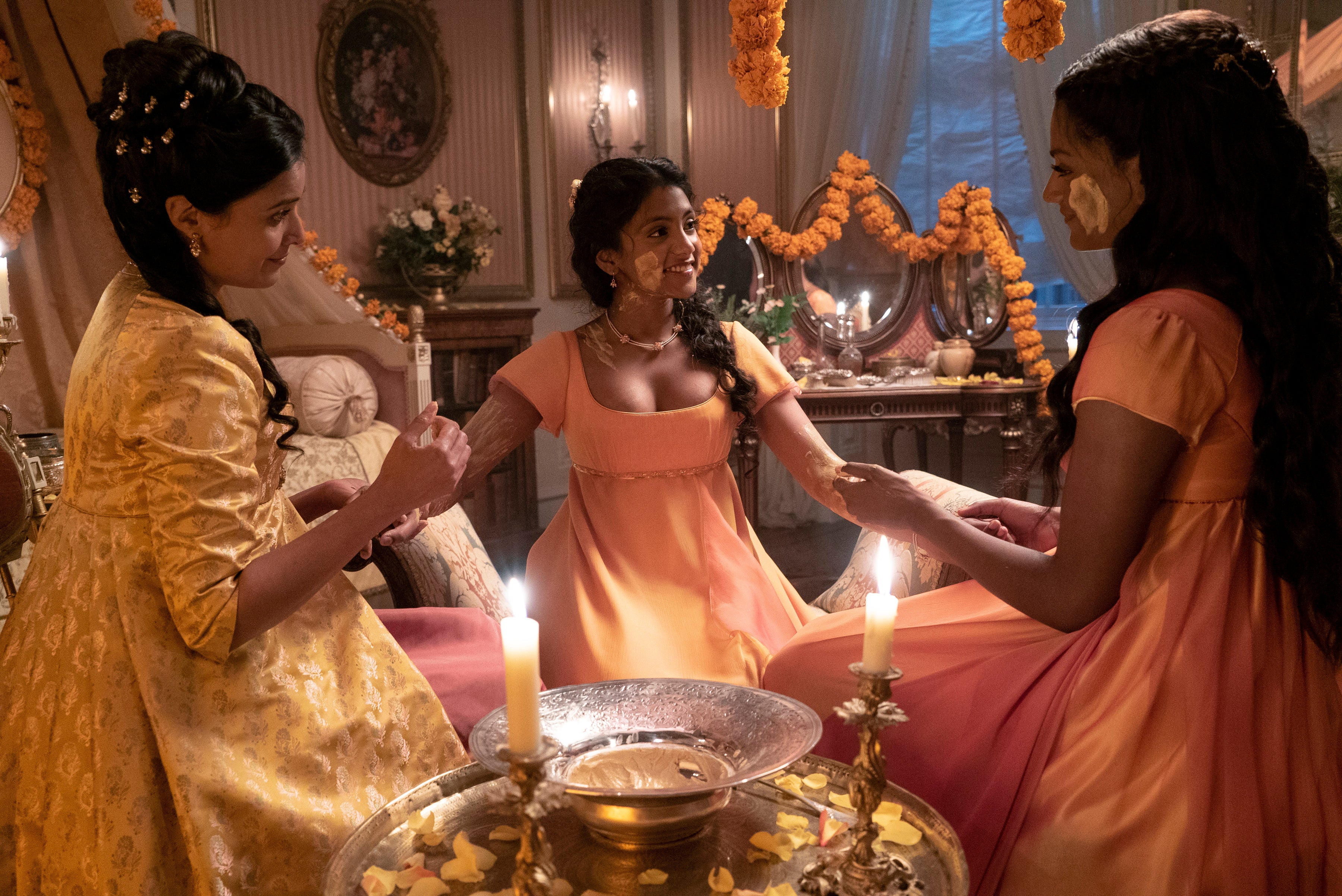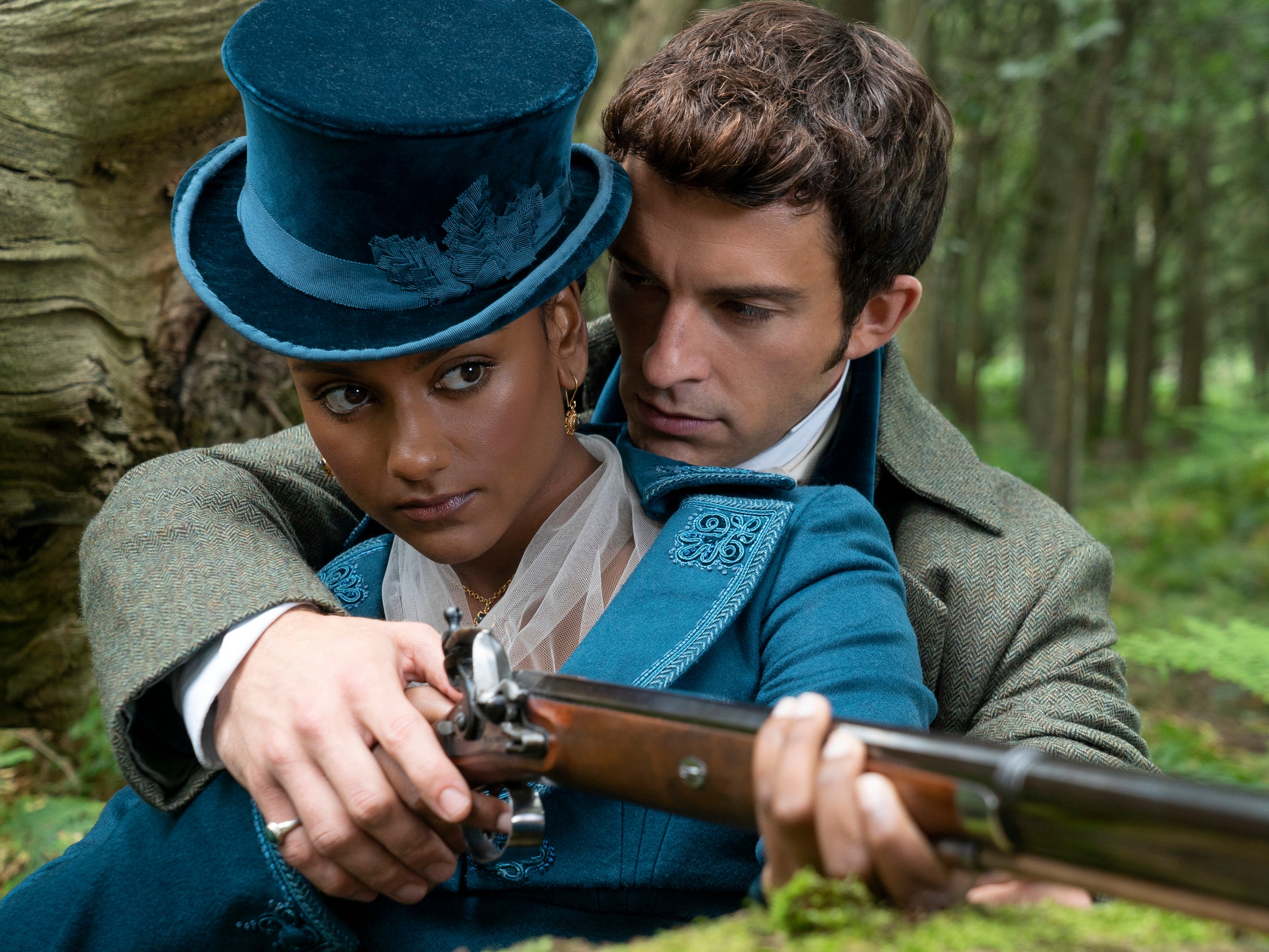
“To see two lead roles created in a show that was so hugely popular, to see the boundaries be changed and opportunities be created gives me so much hope that we are now at the cusp of change and a new era of representation,” says Sebina Hussain.
Hussain is a 30-year-old fashion and beauty content creator and jewellery brand owner from a British-Pakistani background. For her, the lack of representation of south Asian women on TV and in film has often left her wondering where she fits into society.
While efforts have been made in recent years to diversify on-screen talent, writers regularly miss the mark. But, Hussain says “this season of Bridgertonwas not only a joy to watch but deserves credit for executing the diversity element so well.” She points to the makeup and costumes in the series: gold jewellery, pink blush, paisley print shawls and banarsi scarves, that were all subtle but important nods to south Asian culture and experiences.
The hugely popular Netflix series follows the stories of Regency-era families in Mayfair, London as they navigate love, scandal and trying to find the perfect match for marriage. The show’s first season broke Netflix’s records by becoming the most-watched series on the platform upon its release, and as well as the steamy scenes and regal aesthetic, the series has been celebrated for its unique portrayal of people of colour in period dramas, a genre which they’re often left out of.
Series two of the hit-show is no different. It follows the story of Kate Sharma – played by Sex Education’s Simone Ashley – and Edwina Sharma – played by Charithra Chandran – sisters who arrive from India to make their societal debuts in Mayfair in hopes of finding Edwina – dubbed the best match of the marital season – a suitable husband. But, the sisters soon become entangled in a love triangle with viscount Anthony Bridgerton, played by Jonathon Bailey.

Remina Nair, 28, a music journalist from London of a south Indian background, said she is a big fan of period dramas, in general, with Bridgerton standing out to her during its first season due to the diversity of its cast. “When I heard about the new south Asian leads in season two, I was excited to watch them and when I saw that the actresses had darker skin, it made me even happier.”
Growing up, Nair said she often didn’t see actors who looked like her and enjoyed witnessing Netflix featuring talent with darker skin tones. She said: “If I saw more darker-skinned actresses represented at a younger age, I feel my internal insecurities about my skin colour wouldn’t have been as prevalent as I would have seen a wider representation of skin colours.”
But, like Hussain, Nair was particularly thrilled to not only see women of Indian origin (both actors playing the sisters are from a south Indian, Tamil background) on screen, but to see their culture being celebrated.
“From the classical renditions of Asian music to the haldi (turmeric) ceremony to the hair oiling scene - it was great to see a period drama highlight south Asian culture.”

“There’s an enormous impact to seeing yourself, or not seeing yourself, on screen to people’s self-perception, identity and self-esteem,” say Kiran Hothi and Sonam Kaur, co-founders of community platform Not Your Wife. “Television doesn’t just reflect culture, it shapes it which is why representation is so important.”
As a platform, Not Your Wife focuses on amplifying and celebrating south Asian women while providing a safe space for them to explore and discuss communal experiences. Through a combination of social media, journalism, events and partnerships, they put a spotlight on the talents of their community of over 35,000 people on Instagram alone.
The pair say that South Asian women are “noticeably absent” in pop culture, despite being the largest ethnic minority in the UK, according to the last census.
“Prior to Bridgerton, it’s difficult to pinpoint the last time we witnessed a South Asian woman cast as the lead in a show as mainstream and successful. Or the last time we saw a south Asian woman at the forefront of a beauty or social media campaign, or as the love interest in a film. We think that speaks volumes in itself.”
“It’s been incredible to see Simone Ashley and Charithra Chandran’s characters and to see two South Asian women being represented as multidimensional beings, without the stereotypes of being oppressed, submissive or culture-bashing.”
Hothi and Kaur also point to the darker skin tones of the lead actors, explaining how when south Asian women are occasionally cast on screen, they are “typically lighter-skinned, north Indian women with more Euro-centric features”.

Beulah Rajkumar, 27, an editor from Kent who is of a British, South Indian, Sri Lankan and Tamil background agrees. “Western culture tends to define the entire South-Asian community with north Indians: Priyanka Chopra, Naomi Scott, Lilly Singh, or Bollywood. They’ve been a pivotal part of South-Asian representation but cannot define the entire community.
“Then, dark-skinned Tamil women will often play ‘the friend’, ‘the lower caste girl’, or be the butt of a joke in reference to her skin complexion,” she says.
In comparison, Rajkumar said the Sharma sisters in Bridgerton are portrayed as “classy, intelligent and stunning.” She said: “Edwina is even chosen as the Queen’s ‘diamond’ of the season, the it-girl of Regency society. It’s a breath of fresh air to see dark-skinned Tamil women portrayed as alluring and interesting.
Rajkumar particularly enjoyed Edwina’s character development from a “sweet and innocent girls-girl” who feels pressure to be desired by men to “outspoken and uncompromising, flipping familiar narratives of the naive Asian girl.”

While she said the season is “a big win for representation”, Beulah feels there could have been less ambiguity about the Sharma’s heritage. She said: “The sisters jump from saying ‘didi’ (Hindi for elder sister) to ‘appa’ (Tamil for dad) throughout the season. Once again, culture is struggling to say the word ‘Tamil’ out loud - continuing the on-screen cliche of the generalised Indian.”
Hothi and Kaur from Not Your Wife added: “While it’s been amazing to see this kind of representation on-screen and we hope it continues, we truly believe that in order to create authentic, and long-lasting change, more work needs to be done off-screen.
“More south Asians need to be behind-the-scenes in the writers’ rooms, the directors’ chair, behind the camera and consulting on shows in order to make a bigger difference.”







